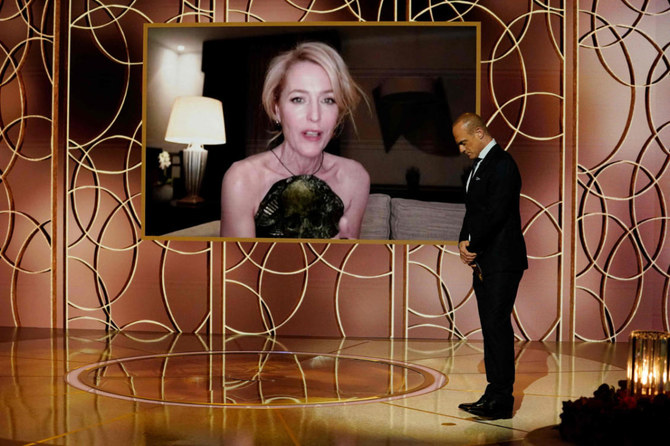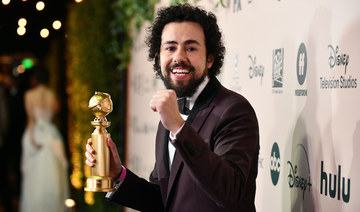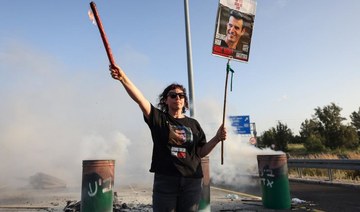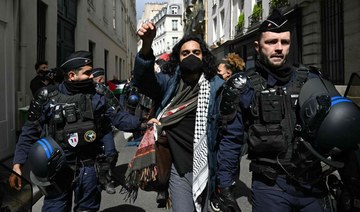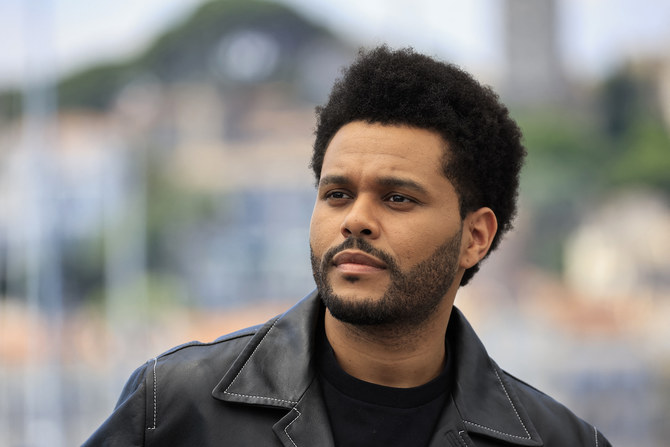LOS ANGELES: British royal drama “The Crown” and comedy “Schitt’s Creek” won top television honors at the Golden Globes on Sunday in a mostly virtual bicoastal ceremony that took place under pandemic conditions and a furor over diversity.
Newcomer Emma Corrin, 25, who played a young Princess Diana in “The Crown,” was named best TV drama actress, beating veterans Olivia Colman and Laura Linney. Josh O’Connor, who played Prince Charles in the Netflix series, won best TV drama actor.
“I’m just sorry I am sitting here in my tragic little office and not surrounded by the people who make this show so lovely, ” said Peter Morgan, creator of “The Crown,” who appeared on a webcam.
A surprised Corrin said, “Thank you so much to Diana. You taught me compassion and empathy.”
Dan Levy, the co-creator of “Schitt’s Creek,” called the best comedy series win a “lovely acknowledgement” of the show’s message of inclusion.
Jason Sudeikis, wearing a hoodie, was equally taken aback by his best comedy actor win for TV series “Ted Lasso,” about an American football coach who gets a soccer job in London. “That’s nuts,” he said. “That’s crazy. Wow!“
The Korean-American movie “Minari,” about an immigrant family starting a farm in rural America in the 1980s, won best foreign language movie.
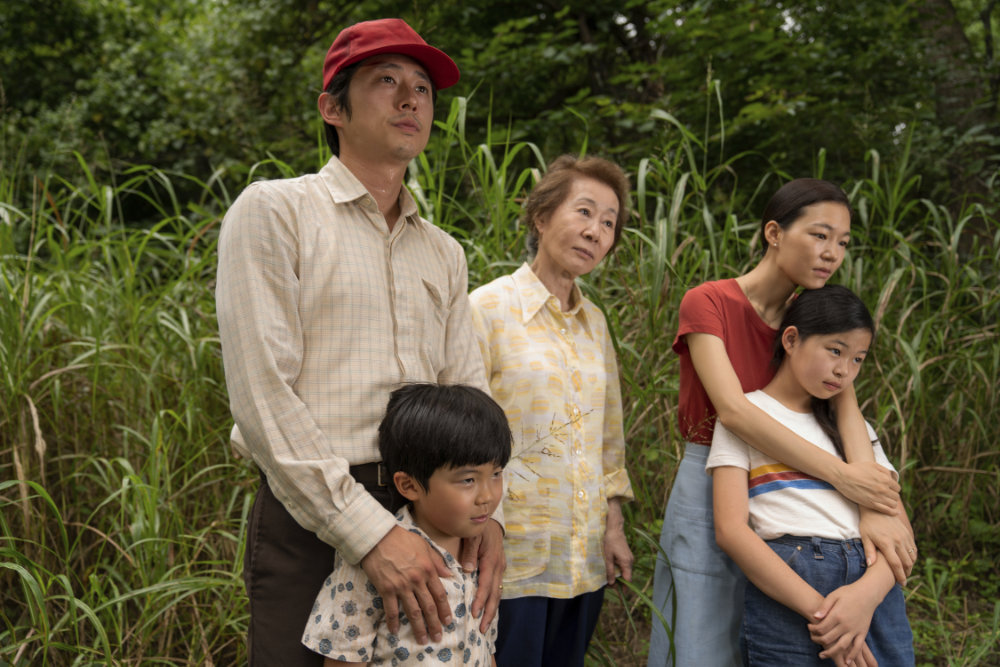
The cast of "Minari," the film won the award for best foreign language motion picture at the Golden Globe Awards. (Josh Ethan Johnson/A24 via AP)
Elsewhere, British actors Daniel Kaluuya and John Boyega, and animated movie “Soul” were among diverse winners chosen by the Hollywood Foreign Press Association (HFPA), which has been lambasted for having no Black people among its 87 members.
Kaluuya won the movie supporting actor Golden Globe for his role as Black Panther activist Fred Hampton in “Judas and the Black Messiah.”
Boyega won TV supporting actor the “Small Axe” series about life as a Black person in 1970s London. “Soul,” the first Pixar movie to have a Black character in the lead, was named best animated movie and won best score.
Members of the HFPA appeared on Sunday’s show and pledged to do better. Ali Sar, the current president, who is from Turkey, said the group would create an environment where “a diverse membership is the norm, not the exception. We look forward to a more inclusive future.”
Webcams and gowns
The usual chummy gathering of A-listers at a gala dinner in Beverly Hills was replaced by webcams in the homes of glammed-up celebrities, small physical audiences made up of masked frontline workers, and a skit about self-involved celebrities consulting doctors with their coronavirus concerns.
Comedians Tina Fey and Amy Poehler, hosting from New York and Los Angeles respectively, opened the show with a series of jokes at the expense of the HFPA.
“We all know awards shows are stupid,” said Fey. “Even in stupid things, inclusivity is important and there are no Black members of the Hollywood Foreign Press Association. I realize HFPA maybe you guys didn’t get the memo ... but you’ve got to change that.”
In the movie category, Netflix period drama “Mank,” about the screenwriter of “Citizen Kane,” went into Sunday’s show with a leading six nods, including for best drama movie, for actors Gary Oldman and Amanda Seyfried, and for director David Fincher.
Netflix has yet to win a major movie awards prize.
The biggest competition comes from Searchlight Pictures’ “Nomadland,” a moving documentary-style drama about van dwellers in recession-hit America, and star-laden 1960s hippie courtroom drama “The Trial of the Chicago 7,” also from Netflix. The #MeToo revenge black comedy “Promising Young Woman” and the unsettling aging tale “The Father” round out the film drama nominations.
Aaron Sorkin won the Golden Globe for best screenplay for “The Trial of the Chicago 7,” while British actress Rosamund Pike was awarded best comedy actress for the movie “I Care a Lot.”
The Disney+ TV film of hit Broadway musical “Hamilton” and Amazon Studios’ “Borat Subsequent Moviefilm,” a satire on the America of former President Donald Trump, are seen as front-runners in the best comedy or musical movie category.
“Black Panther” star Chadwick Boseman, whose death at 43 of an undisclosed battle with cancer stunned fans and the industry, is considered the favorite for a best actor Golden Globe. His last performance, as a brash trumpet player in drama “Ma Rainey’s Black Bottom,” was released after his death.









